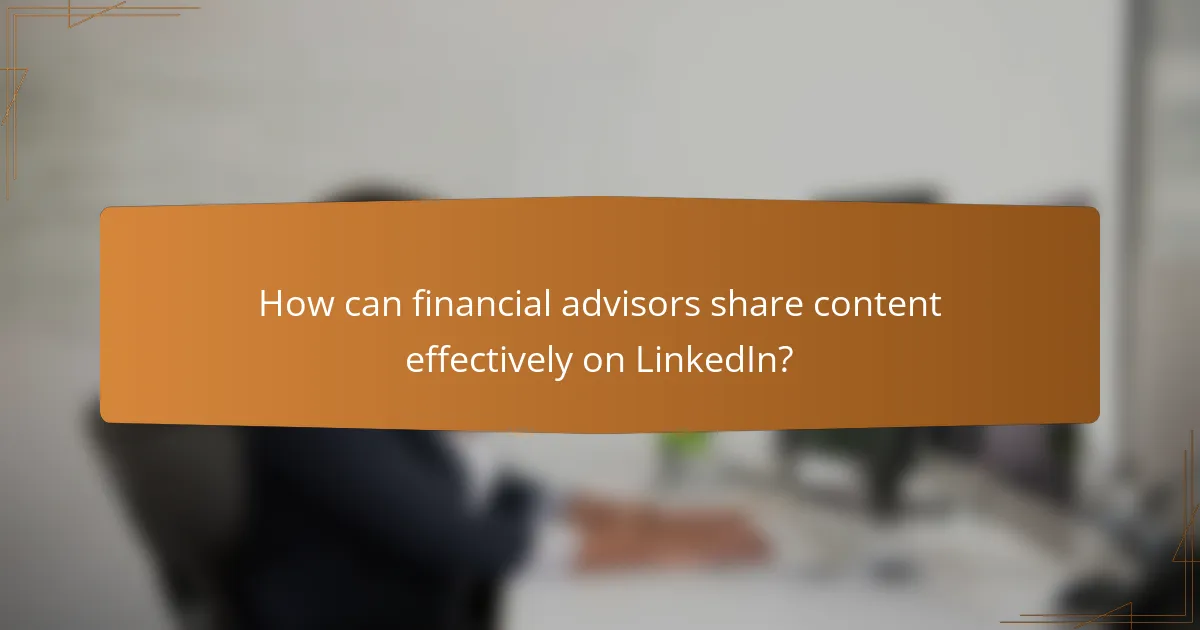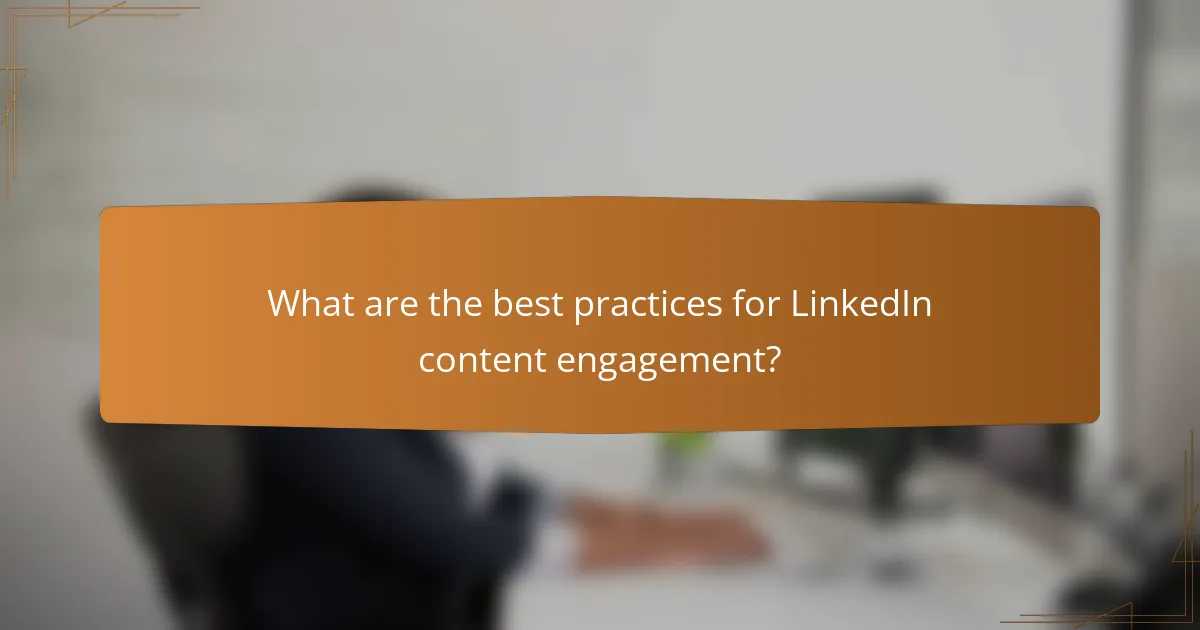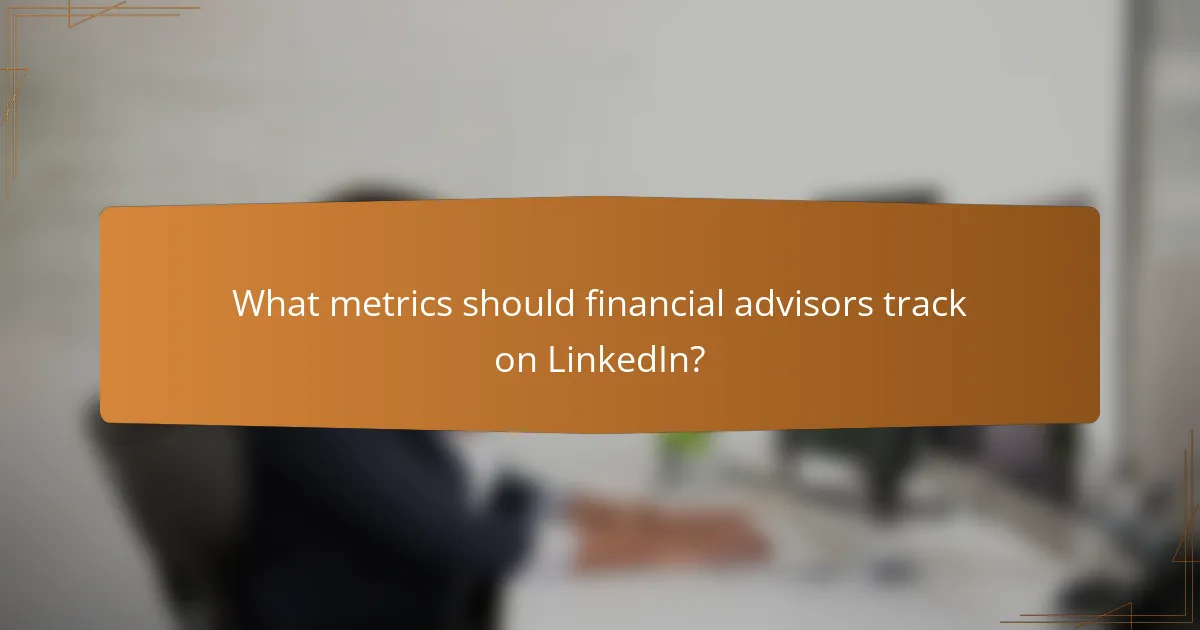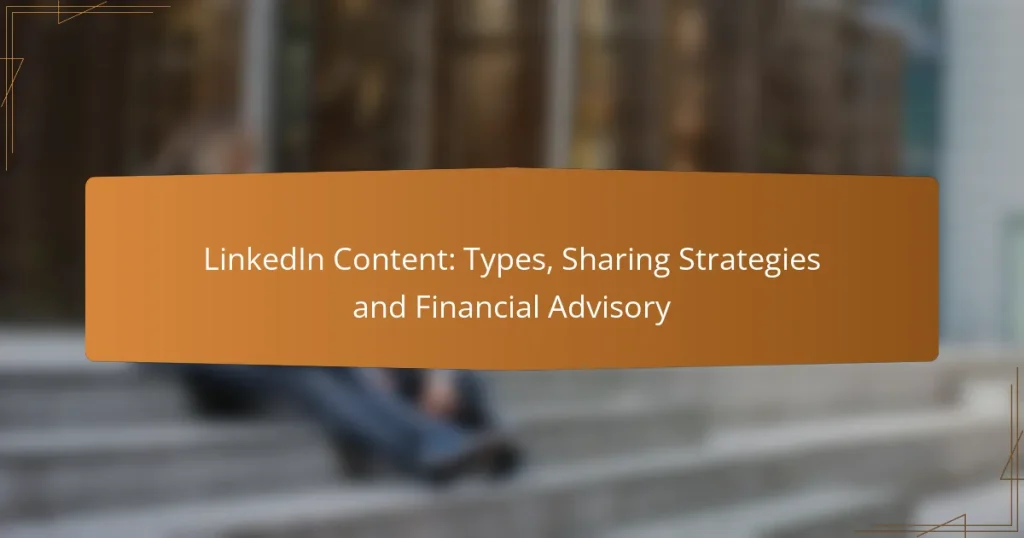LinkedIn offers financial advisors a powerful platform to showcase their expertise and engage with their audience. By sharing a variety of content types, such as thought leadership articles and client success stories, advisors can build trust and enhance their professional presence. Effective sharing strategies, including timing and engagement tactics, further amplify their reach and connection with potential clients.

What types of content perform best on LinkedIn for financial advisors?
Financial advisors can maximize their LinkedIn presence by focusing on content that showcases expertise, builds trust, and engages their audience. The most effective types of content include thought leadership articles, client success stories, industry news updates, video content, and infographics.
Thought leadership articles
Thought leadership articles position financial advisors as experts in their field. These pieces should address current trends, offer insights on financial strategies, or explore complex topics in a digestible format. Aim for a length of 800 to 1,500 words to provide depth while maintaining reader interest.
To enhance engagement, include real-world examples and actionable advice. Use clear headings and bullet points to break up text and make it easier to read. Regularly publishing these articles can establish credibility and attract potential clients.
Client success stories
Sharing client success stories builds trust and demonstrates the value of your services. These narratives should highlight specific challenges clients faced, the strategies you implemented, and the positive outcomes achieved. Aim for a concise format, ideally 300 to 600 words.
When crafting these stories, ensure you have client permission and maintain confidentiality. Use quotes and testimonials to add authenticity, and consider including before-and-after scenarios to illustrate the impact of your advice.
Industry news updates
Posting timely industry news updates keeps your audience informed and positions you as a knowledgeable resource. Focus on significant changes in regulations, market trends, or economic forecasts that could affect your clients’ financial decisions. Short posts of 150 to 300 words work well for this type of content.
To engage your audience, include your analysis or opinion on the news and how it may impact their financial strategies. Encourage discussions by asking questions or inviting comments, which can increase visibility and interaction on your posts.
Video content and webinars
Video content and webinars are effective for engaging audiences and conveying complex information in an accessible format. Short videos (2 to 5 minutes) can cover topics like investment tips or market updates, while webinars can dive deeper into specific subjects, lasting 30 to 60 minutes.
Ensure your videos are high quality and visually appealing. For webinars, promote them in advance and provide valuable takeaways to encourage attendance. Record sessions for later sharing, allowing you to reach a wider audience post-event.
Infographics and visual data
Infographics and visual data simplify complex information, making it easier for your audience to digest. Use visuals to illustrate financial concepts, market trends, or statistics that are relevant to your clients. Aim for clarity and simplicity in design, focusing on key points.
Consider using tools like Canva or Piktochart to create professional-looking infographics. Share these visuals on LinkedIn to enhance engagement, as posts with images tend to receive higher interaction rates. Always include a brief explanation or context to accompany the visual content.

How can financial advisors share content effectively on LinkedIn?
Financial advisors can share content effectively on LinkedIn by focusing on engagement, utilizing groups, and timing their posts. These strategies help advisors connect with their audience and enhance their professional presence.
Utilizing LinkedIn Groups
Joining LinkedIn Groups relevant to finance and investment can significantly boost content visibility. Advisors should actively participate in discussions, share insights, and post their articles or updates to engage with group members.
Consider creating or leading a group focused on specific financial topics, which can position you as a thought leader. Regular contributions can foster relationships and encourage members to share your content further.
Engaging with comments and messages
Responding to comments on your posts and engaging in direct messages is crucial for building relationships. Acknowledging feedback or questions shows that you value your audience’s input and can lead to deeper connections.
Set aside time daily to interact with your network. Quick responses can enhance your visibility and encourage more interaction, which can lead to increased shares and recommendations.
Scheduling posts for peak times
Timing your posts for when your audience is most active can significantly improve engagement rates. Research suggests that weekdays, particularly Tuesday through Thursday, often yield higher interaction levels.
Utilize scheduling tools to plan your posts during these peak times. Aim for early mornings or late afternoons when professionals are likely to check their feeds. Regularly analyze engagement data to refine your posting schedule.
Using hashtags strategically
Incorporating relevant hashtags can enhance the discoverability of your posts. Use a mix of popular and niche hashtags related to finance, such as #FinancialPlanning, #InvestmentAdvice, or #RetirementSavings.
Limit your hashtags to about three to five per post to avoid clutter. Monitor which hashtags generate the most engagement and adjust your strategy accordingly to maximize reach.

What are the best practices for LinkedIn content engagement?
To enhance engagement on LinkedIn, focus on creating high-quality, relevant content that resonates with your audience. This includes using compelling headlines, incorporating calls to action, and encouraging user-generated content to foster interaction and connection.
Creating compelling headlines
Compelling headlines grab attention and entice users to read further. Aim for clarity and specificity, using strong action words and relevant keywords that reflect the content’s value. For example, instead of “Tips for Financial Success,” try “5 Proven Strategies to Boost Your Financial Portfolio.”
Consider using numbers, questions, or bold statements to make your headlines stand out. A/B testing different headlines can also help you identify what resonates best with your audience.
Incorporating calls to action
Calls to action (CTAs) guide your audience on what to do next, whether it’s liking, sharing, or commenting on your post. Effective CTAs are clear and concise, such as “Share your thoughts below!” or “Click to learn more!”
Position your CTAs strategically within your content, ideally at the end of your post or after a key insight. Avoid overwhelming your audience with too many CTAs; one or two focused actions are usually sufficient.
Encouraging user-generated content
User-generated content (UGC) can significantly enhance engagement by fostering community and authenticity. Encourage your audience to share their experiences, insights, or questions related to your content. For instance, you might prompt followers to share their financial success stories or challenges.
To facilitate UGC, consider hosting contests or challenges that incentivize participation. Highlighting user contributions in your posts can also motivate others to engage and share their perspectives.

What metrics should financial advisors track on LinkedIn?
Financial advisors should focus on engagement rates, follower growth, and content shares and comments to gauge their LinkedIn performance. These metrics provide insights into audience interaction and content effectiveness, helping advisors refine their strategies.
Engagement rates
Engagement rates reflect how actively your audience interacts with your content. This includes likes, shares, and comments relative to your total followers. A good engagement rate for LinkedIn typically falls between 1% to 3% for most posts.
To improve engagement, consider posting content that resonates with your audience’s interests, such as financial tips or market insights. Regularly analyze which types of posts generate the most interaction and adjust your content strategy accordingly.
Follower growth
Follower growth measures how quickly your audience is expanding on LinkedIn. A steady increase in followers indicates that your content is attracting attention and that your brand is gaining credibility. Aim for a growth rate of 5% to 10% monthly to maintain momentum.
To enhance follower growth, actively connect with industry peers, participate in relevant groups, and share valuable content consistently. Engaging with your audience through comments and messages can also encourage more people to follow your profile.
Content shares and comments
Content shares and comments are critical indicators of how well your posts resonate with your audience. High numbers of shares suggest that your content is valuable enough for others to distribute, while comments indicate active discussion and interest. Aim for a minimum of 5 to 10 shares and comments per post to ensure your content is engaging.
To boost shares and comments, create thought-provoking content that invites discussion, such as asking questions or sharing controversial opinions. Additionally, consider using visuals or infographics to make your posts more shareable and appealing.

How do LinkedIn algorithms affect content visibility?
LinkedIn algorithms significantly influence how content is displayed to users, prioritizing posts that generate engagement. The more interactions a post receives, such as likes, comments, and shares, the higher its visibility in users’ feeds.
Understanding engagement-based ranking
Engagement-based ranking is a core component of LinkedIn’s algorithm, determining which posts appear prominently in users’ feeds. Posts that attract more engagement are favored, leading to increased visibility and reach.
To leverage this, focus on creating content that encourages interaction. Ask questions, invite opinions, or share compelling stories that resonate with your audience. Posts that elicit comments or shares can see a significant boost in visibility.
Avoid overly promotional content, as it may lead to lower engagement rates. Instead, aim for authenticity and value in your posts, which can foster a more engaged community around your profile or brand.


